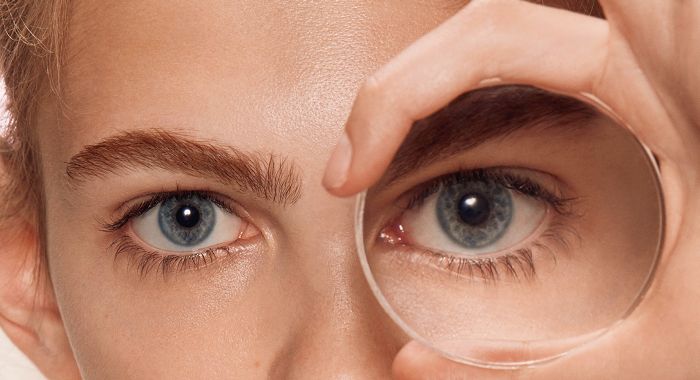Coachella: how Doja Cat’s hairstylist created 23 hair monsters
Hairstylist Charlie Le Mindu explains how he made the monstrous blonde hair suits for Doja Cat’s electrifying Coachella set. ✍️ - Alex Peters
Over the weekend, Doja Cat performed what is being widely described as the highlight of Coachella 2024. The first female rapper to headline the festival, her set was an electrifying tour de force full of spectacle and avant-garde fashion. Amidst all the mud-wrestling and giant dinosaur skeletons, one of the biggest highlights was undoubtedly the lustrous, gleaming blonde hair suits that Doja and her dancers wore during “Demons” and “Tia Tamera”.
For beauty lovers, the costumes were immediately recognisable as the work of hairstylist Charlie Le Mindu, known for producing irreverent, wildly imaginative pieces that blur the boundaries between hair, fashion and art. Le Mindu first created his hair monsters two decades ago, and now, at the special request of Doja and Brett Alan Nelson, her stylist and creative director, has refigured them into over 20 costumes for her Coachella performance. “I’m really happy about it,” says Le Mindu on the phone from Los Angeles. “It feels like it was a moment for Doja and the moment of Coachella as well.”
Le Mindu was first approached for the project around three months ago by Nelson, who already had a clear vision of what he wanted from the partnership. Having previously worked together for Doja’s 2022 Coachella costume, Le Mindu says the process was very smooth. “She’s so nice to work with and Brett has such a good vision. When you see them working together, Brett and Doja, they have really good collaborations. So they’re really good to work with.”
After going back and forth on the design of the costumes for a few weeks, Le Mindu and his team set out on the colossal task of creating 23 hair suits. The process started with sourcing enough hair to make the costumes, all of which had to be ethically sourced. “What’s very important is to make sure where I get the hair from,” says Le Mindu. “I need to know that my hair dealer gets the hair from good sources, that the people who give their hair get benefits from it, get money for it.” The texture and quality of the hair were also important when it came to dying it blonde, because they affect how colour is taken.
Once the hair was successfully sourced, and Nelson had picked out the shade he wanted from samples the team sent to him, they set about dying the 400 kilos of hair. It was a week-long process that involved giant bathtubs of colour, which the extensions were dipped into three or four times. Alongside his team, including right-hand woman Mirina, Le Mindu recruited a group from the Paris College of Arts to help with the huge workload. Altogether, around 25 people worked to create the costumes. “It was a project that needed as many hands as I could [get] on my team,” he says.
After creating hair costumes for 20 years, Le Mindu has developed the technique to get things done quickly, but for those who weren’t as used to working with hair, the process took a little bit longer to pick up. “It was quite challenging at times and they were really long hours,” he says, adding that they finished everything in just three weeks (“which is insane!”).
After being assembled in Paris, the costumes, each weighing around 10 kilos, were shipped to LA (with a “very expensive FedEx”), where the dancers had about a week to rehearse in the suits and get used to the extra weight, as well as the heat that wearing a full fur costume in the desert brings. Temperature was one of the key considerations when Le Mindu was adapting the original hair suit designs to the needs of the dancers. The other was ensuring that they could move freely while wearing them. The team used elastic and spandex to let the costume stretch and open in places “you don’t see”, including open crotches. To get the design right, Le Mindu jokes that he acted as his own model, and danced in front of the mirror.
For Doja’s costume, Le Mindu created a completely original design which went through a number of different stages before they settled on the final look. “Doja’s was really changing every day. It started quite thick at the beginning and then we got thinner and thinner and thinner because she needed to be different and it was covering too much at first,” he says. At one point, the hair on the costume was braided, then wavy, but ultimately Doja didn’t want any restraints and they decided on a small swimsuit design.
The final result of the costumes, and the way Paris Goebel choreographed the performance, is something that Le Mindu is happy with. “It was sexy and it was fun at the same time,” he says. “I think the hair works perfectly with movement, it was great for the stage. When they turned around they looked like car washes and other times like animals.”
Not only were the costumes visually stunning, but they also became the physical representation of the feelings that Doja uses her art to evoke. “It can be gross to work with hair. I think Doja brings every kind of emotion to people and that’s what hair gives us as well,” says Le Mindu. “It’s beautiful, but it can be also disturbing to see this kind of thing on the stage. And I think that’s what she wants to give – she wants to make people think about these emotions.”
The 23 hair costumes are now being stored for next weekend. While unable to give any details, Le Mindu hinted that they might be given some small tweaks before their second outing. “It’s not an upgrade! Because they were already beautiful, but just a little change. We don’t know yet.”
Check out all of the images here.

